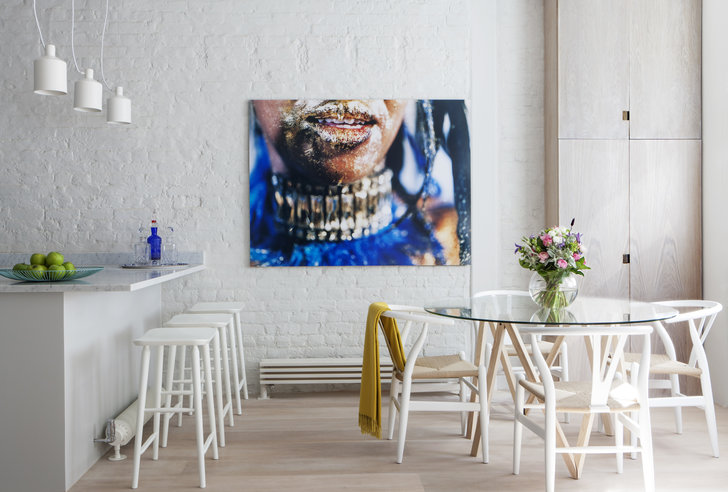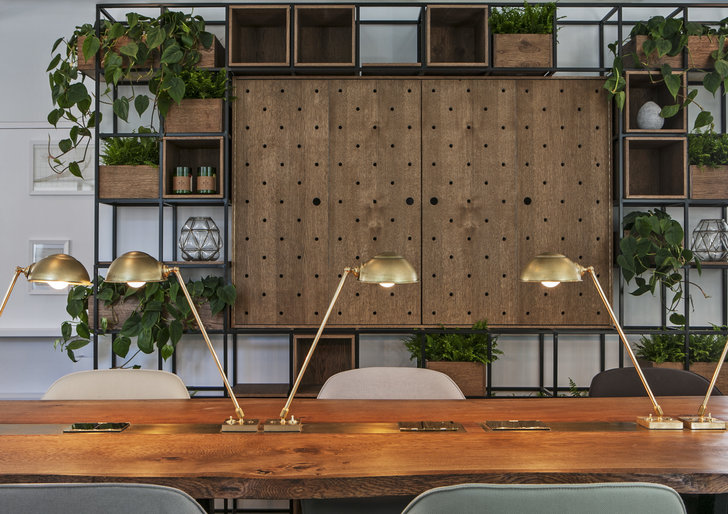Get Inside Design
Insights into the world of interior design - straight to your inbox.
How good interior design can improve health and well being
Banish sick building syndrome in the home and workplace by connecting with nature and improving the quality of light and air, says one of our designers ..
Our busy lives spent working, commuting and sitting in front of computer or TV screens can lead to a disconnect with our natural surroundings. Which is a shame as being in nature, whether it’s a walk in the woods or on the beach, or a potter in the garden, is a surefire way to calm, relax and energise. This innate human connection with nature is known as biophilia and fortunately, there are ways to introduce it into the home and office, as Rory Macpherson of Play Associates explains.

A clean and airy kitchen/dining space by Play Associates
Breathe better air
The challenge: contaminants in the indoor environment are more than 1,000 times more likely to be inhaled than outdoor air and can be up to 10 times more polluted than outside air. The symptoms of poor air quality in buildings are so widespread that it has been given a name: Sick Building Syndrome (SBS).
The potential: research suggests that productivity improvements of 8-11% are not uncommon as a result of better air quality. Improving the quality of the air boosts health, concentration, and cognition.
The solution: the quality of the air we inhale indoors can be improved with simple changes like increasing the number of indoor plants around us or ensuring proper ventilation with air filtration systems, which circulate clean and purify air.
Let the light in
The challenge: our physiological processes are affected by light and temperature. Our circadian rhythms – patterns of brain wave activity, hormone production, cell regeneration and other biological activities – govern our mood and state of mind. If lighting or temperature is not sympathetic to these rhythms, we feel out of sorts and unproductive.
The potential: the right light at the right time supports healing, improves concentration and increases our well being. When harnessed architecturally through Human Centric Lighting (HLC), which imitates circadian rhythms, light can improve our mood and stabilise volatile situations.
The solution: make use of daylight as much as possible. Where daylight is insufficiently available, use electric lighting to resemble daylight. Intelligent and programmable dynamic interior lighting installations allow light settings to be tuned in intensity, distribution and spectral composition over time.

An abundance of house plants in this office interior by Play Associates
Bring nature indoors
The problem: city dwellers can spend up to 90% of their time indoors which means that we live our lives disconnected from nature.
The potential: we feel restored, relaxed, and cognitively aware when around nature. A ratio of indoor plants at one per three employees sees a significant improvement of air quality, reducing CO2 by up to 50%. The introduction of plants also reduces airborne dust, bacteria, and mould, all of which would otherwise be inhaled by employees. Plants can also aid reduction of man-made toxins from interior finishes and cleaning products. They are highly efficient and appealing ways of purifying the air, removing up to a range of 50% to 75% of the total volatile organic compounds.
The solution: introduce more plants into interior spaces as well as other natural elements such as water features, materials including stone, wood and linen. If no view of nature is available through a window, introduce one with a painting, photograph or wall frieze.
Next time, Five steps to choosing the right interior designer

